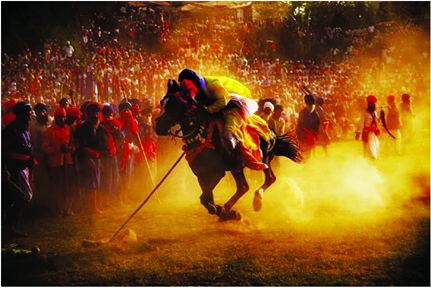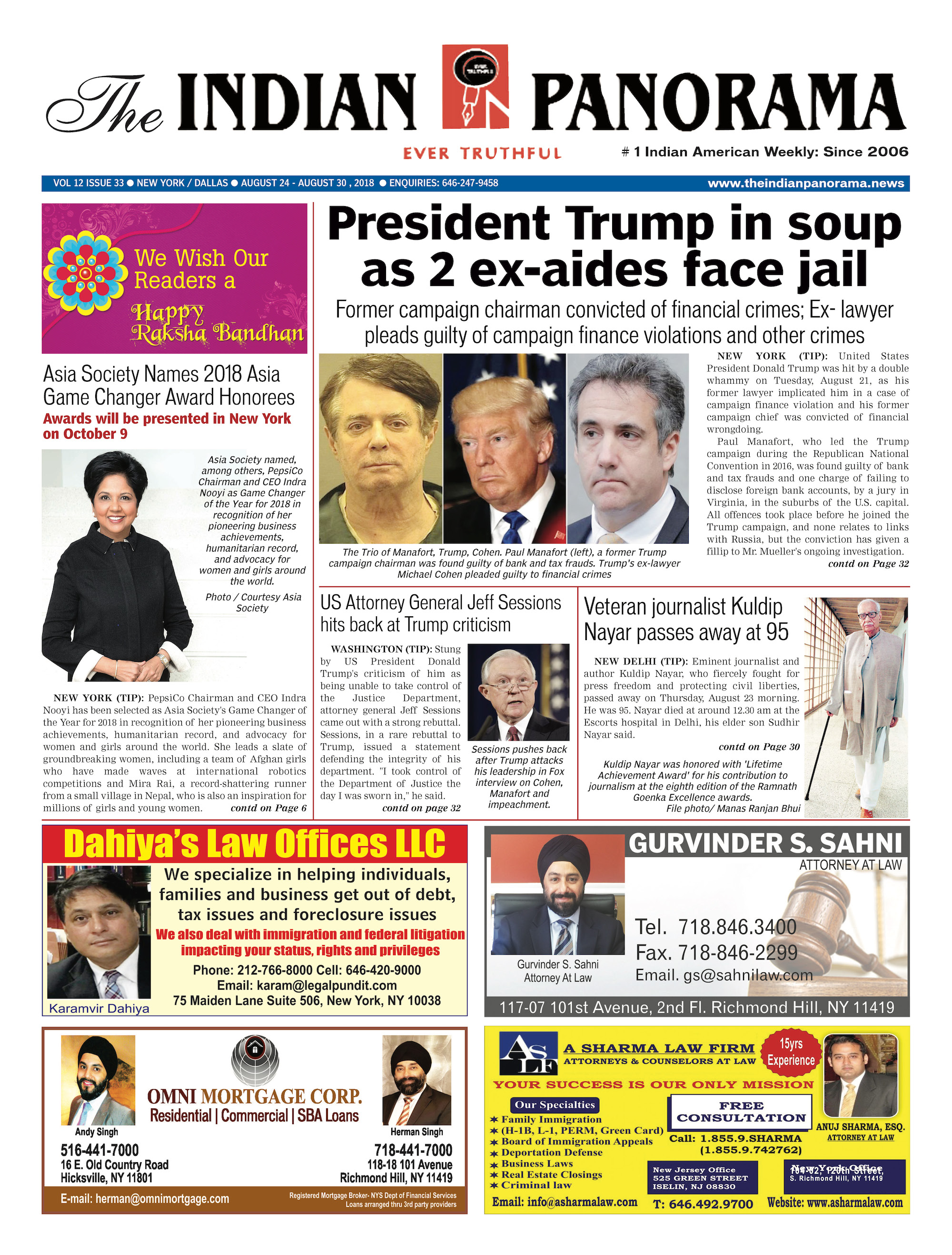
Falling on the second day of the month of Chet, which usually comes in March as per the Gregorian calendar, Hola Mohalla is all about exploring the essence of Punjabi culture.
Organized at a grand scale in Anandpur Sahib in Punjab, this festival takes people on a fun-packed ride of heritage, glorifying the Sikh Culture.
Mohala is a word that is usually used to describe a cheerful procession. And Hola Mohalla primarily implies to be a form of an army column that is accompanied by the war drums, standard-bearers, and much pomp and show.
Hola Mohalla was first organized by the tenth guru of the Sikhs, Guru Gobind Singh Ji. It is believed that the main purpose of organizing this festival was to fundamentally strengthen the Sikh Community with fair use of military exercises and mock battles. Daredevil acts like bareback horse-riding by the warriors, standing upright simultaneously on two speeding horses to even tent pegging are a few common acts on display during this Indian festival.
Hola Mohalla truly depicts the bravado of Sikh men through mock fighting of the Sikh warriors, which they have showcased in the battlefields over history.
Meaning of “Hola Mohalla”
The word “Hola” is a masculine form of feminine sounding “Holi” and is more likely to have evolved from word “halla” which implies a military charge. “Mohalla” is derived from an Arabic word mahalla, implying a colony, in this case an army procession. Thus, when combined together, the words “Hola Mohalla” mean “the charge of an army.”
When is Hola Mohalla Celebrated?
The dates of Hola Mohalla celebrations are based on the traditional lunar calendar of Sikhism, known as “Nanakshahi calendar”. The festival commences on the second day of Chett month, which is also the first month of Nanakshahi calendar.
The festival of Hola Mohalla usually coincides or differs by a day with holi celebrations in the Gregorian calendar month of March. Holi is celebrated in the Phalgun month of Hindu calendar and the celebration falls on the first day of lunar month Chett.
Hola Mohalla History
The festival of Hola Mohalla was founded by the 10th Guru of Sikhism – Guru Gobind Singh. The history of Hola Mohalla dates back to 1699, when Guru Gobind Singh formed the Khalsa Panth, which is a warrior community of Sikhs. Khalsa was formed by the Guru to wage war against the atrocities and conversion philosophy of Mughal emperor Aurangzeb.
The legend has it that in 1699 Guru Gobind Singh asked the sikhs to gather at Anandpur on the day of Vaisakhi, an annual spring harvest festival celebrated in Punjab. It was on this day that the Guru appointed “Panj Pyares” and called them as the first Khalsa in Sikh traditions.
Subsequently, in the following year of 1701 on 7th March, Guru Gobind Singh initiated a new tradition of mock battles and poetry at the Lohgarh fort in Anandpur Sahib. Since then the festival of Hola Mohalla is being annually celebrated at Anandpur Sahib and has also spread to other Gurudwaras like Kirtarpur Sahib in Rupnagar district and is also replicated in the Gurudwaras around the world.
Hola Mohalla at Anandpur Sahib
Though the festivities of Hola Mohalla last for three days, people start gathering at Anandpur Sahib, a week before the main festival. The festival at Anandpur Sahib is specially celebrated as a display of war skills and velour of the Sikh community.
Huge colorful procession is organized in which Sikh warriors display their skills of sword fighting, horse riding, martial arts, tent pegging and other daring activities like standing on two galloping horses, riding a bareback horse etc. The Akali warriors also known as Nihang and Khalsa warriors are main participants in mock battles.
Apart from the mock battles, religious processions are also held, giving the people a deep insight into the Sikh religion. Sikhs as well as people of different faith from around the world gather at Ananadpur Sahib to witness the grand festival of Hola Mohalla. Nihangs riding on horseback, spray gulal at the audiences. Religious sermons are organized at various durbars in Anandpur Sahib.
A huge fair is set up at Anandpur Sahib with various stalls for children and elderly. Stalls sell all type of weapons replica – swords, daggers, spear etc and also local delicacies. Another attraction of Hola Mohalla at Anandpur Sahib is the make shift tent houses for the performers and the people coming from far places.
The festival concludes on the third day with a huge procession by Nihang warriors followed by hundred of Sikh pilgrims. The procession is headed by the Panj Pyare and originates from Takht Sri Keshgarh Sahib, one of the five panch takhts (religious thrones) of Sikhism.
The procession then passes through other Gurudwaras – Quila Anandgarh, Mata Jitoji and Lohgarh Sahib, before terminating at Takht. Langars are organized at Gurudwaras as well as other locations for the visitors. Villagers too volunteer for organizing langar as community service.
Hola Mohalla Celebration around the Globe
The festival of Hola Mohalla is celebrated in other Gurudwaras of India and the Gurudwaras across the world as well. Religious sermons and poetry are recited. Stories of valor of Guru Gobind Singh and other religious Gurus are told to the devotees. The procession at Anandpur Sahib is also replicated at other places as well, with Sikh warriors displaying their battle skills.
Hola Mohalla is also celebrated in the countries having good presence of Sikh Diaspora. The celebrations are usually marked by recitation of Guru Grant Sahib and story of Guru Gobind Singh and other religious gurus of Sikhs.
Significance of Hola Mohalla
Hola Mohalla gives a chance to the Sikh community to reaffirm their faith in religious customs and beliefs along with remembering their religious Gurus. The festival is a kind of tribute to Guru Gobind Singh who formed Khalsa warrior community to fight back invaders, and provide protection to the vulnerable, poor, oppressed and needy.
People belonging to other religions and cultures get to know Sikh religion and admire their unity and war skills. The festival of Hola Mohalla also signifies unity in diversity as it is a huge congregation of not only Sikhs but also millions of various faiths and religions. People belonging to different religions and castes enjoy the festivities and dine at the langars (community feast) together.





Be the first to comment